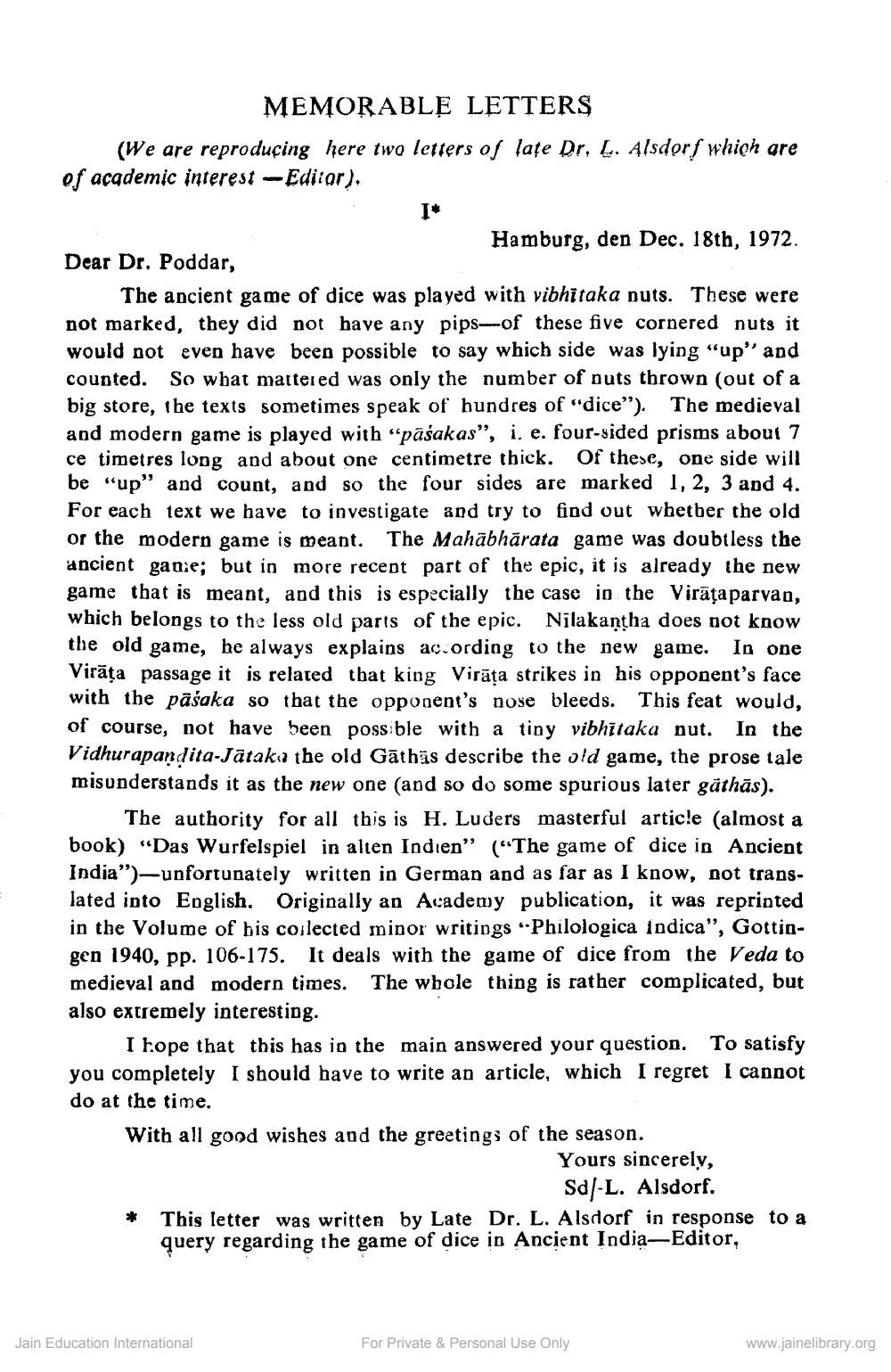________________
MEMORABLE LETTERS
(We are reproducing here two letters of late Dr. L. Alsdorf which are of academic interest -Editor).
I*
Hamburg, den Dec. 18th, 1972.
Dear Dr. Poddar,
The ancient game of dice was played with vibhitaka nuts. These were not marked, they did not have any pips-of these five cornered nuts it would not even have been possible to say which side was lying "up" and counted. So what mattered was only the number of nuts thrown (out of a big store, the texts sometimes speak of hundres of "dice"). The medieval and modern game is played with "pāśakas", i. e. four-sided prisms about 7 ce timetres long and about one centimetre thick. Of these, one side will be "up" and count, and so the four sides are marked 1, 2, 3 and 4. For each text we have to investigate and try to find out whether the old or the modern game is meant. The Mahabharata game was doubtless the ancient game; but in more recent part of the epic, it is already the new game that is meant, and this is especially the case in the Virāṭaparvan, which belongs to the less old parts of the epic. Nilakantha does not know the old game, he always explains according to the new game. In one Virāta passage it is related that king Virața strikes in his opponent's face with the pāśaka so that the opponent's nose bleeds. This feat would, of course, not have been possible with a tiny vibhitaka nut. In the Vidhurapaṇḍita-Jātaka the old Gāthās describe the old game, the prose tale misunderstands it as the new one (and so do some spurious later gāthās).
The authority for all this is H. Luders masterful article (almost a book) "Das Wurfelspiel in alten Indien" ("The game of dice in Ancient India")-unfortunately written in German and as far as I know, not translated into English. Originally an Academy publication, it was reprinted in the Volume of his collected minor writings "Philologica indica", Gottingen 1940, pp. 106-175. It deals with the game of dice from the Veda to medieval and modern times. The whole thing is rather complicated, but also extremely interesting.
I hope that this has in the main answered your question. To satisfy you completely I should have to write an article, which I regret I cannot do at the time.
With all good wishes and the greetings of the season.
Jain Education International
Yours sincerely, Sd/-L. Alsdorf.
* This letter was written by Late Dr. L. Alsdorf in response to a query regarding the game of dice in Ancient India-Editor,
For Private & Personal Use Only
www.jainelibrary.org




